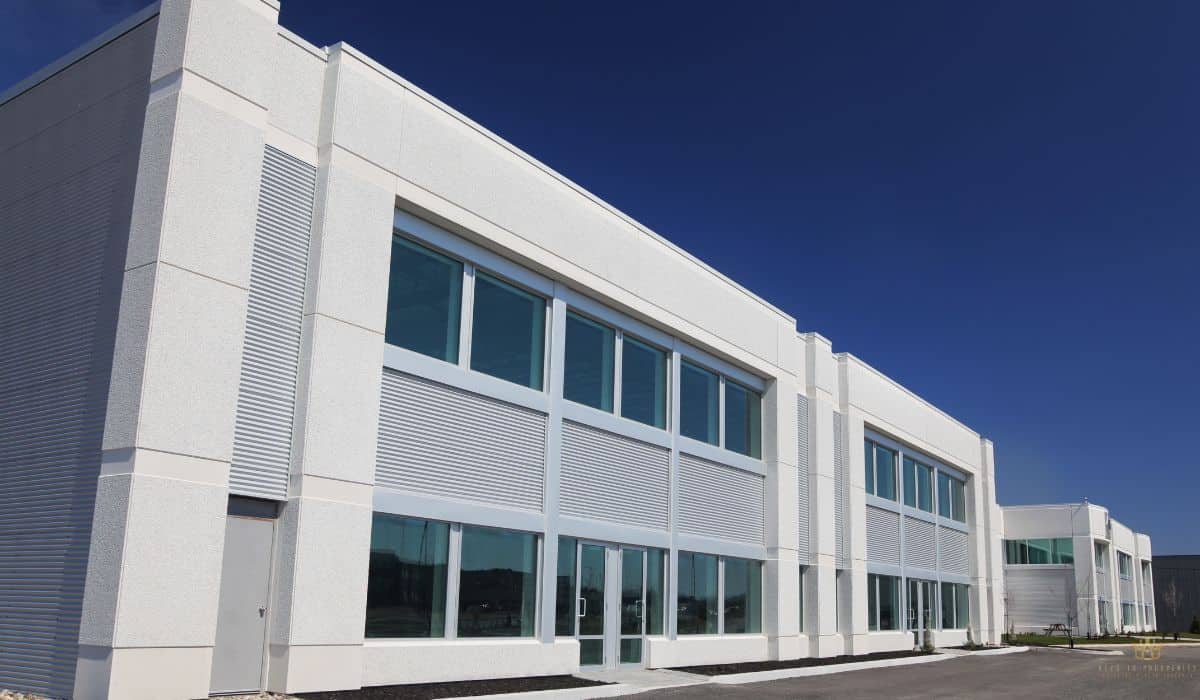
The American commercial real estate landscape represents trillions in value, with property owners depreciating billions under Modified Accelerated Cost Recovery System (MACRS) every single year.
Think about it: Right now, thousands of savvy investors are making critical decisions about property improvements and replacements that will directly impact their taxes this year.
But what many don’t know is that you don’t have to dispose of an entire asset to claim valuable deductions! From our experience, partial disposition strategies offer a powerful yet underutilized approach to managing commercial property tax liability.
Ger this: Implementing these strategies correctly can generate immediate write-offs, reduce taxable income, and significantly improve your annual cash flow.
This isn’t just about saving a few dollars. It’s about transforming how you approach asset management to create substantial financial advantages.
If you’re still weighing options after reading our previous blog on refinance vs. selling, you’re in the right place. Up next, we’ll be covering installment sales for commercial properties to help you better time your exits and tax obligations.
For a broader look at all your potential exit paths, don’t forget to bookmark our full guide on commercial real estate exit strategies.
Short Summary
- Partial asset disposition allows taxpayers to write off the remaining basis of a retired portion of an asset.
- A cost segregation study is essential to accurately allocate asset costs and identify disposables.
- Proper documentation, timing, and calculations are critical when making a PAD election.
- Safe harbor rules and Producer Price Index (PPI) methods help simplify and support your calculations.
- Strategic use of PAD can improve cash flow, lower tax liability, and align with other commercial real estate exit strategies.
Unlocking The Power Of Partial Asset Disposition
Sometimes, tossing out an entire asset just doesn’t make sense, especially when only part of it is worn out or replaced. That’s where partial disposition strategies come in.
They allow property owners to write off a portion of a building or improvement without affecting the entire asset’s book value.

What Is A Partial Asset Disposition?
A partial asset disposition (PAD) is when a property owner removes a portion of a depreciable asset from their books. This could be part of a roof, HVAC system, or any other structural component that’s been improved or replaced.
The goal here is to write off the remaining adjusted basis of that specific piece, freeing up deductions and improving cash flow.
For example, say a commercial building had a $100,000 roof installed in 2010. Fast forward to 2023, and that roof gets replaced with a new $120,000 one.
Under a PAD election, you can dispose of the remaining basis on the old roof, maybe around $25,000 depending on prior depreciation. That’s a direct tax benefit you don’t want to miss.
How PAD Elections Work Under IRS Regulations
Thanks to IRS Reg. §1.168(i)-8, you don’t have to keep those old components dragging down your books. A PAD election lets you recognize the retirement loss in the year of the disposal—even if you didn’t physically remove it.
Timing matters though. This election must happen in the year of replacement. Miss it, and it’s gone.
Don’t be one of those property owners who didn’t file a PAD. They end up over-depreciating assets they no longer use. Once that happens, you’re stuck.
Key Differences Vs. Traditional Asset Management
Here’s what sets PAD apart from the typical asset strategy:
- Traditional method: Keep depreciating the old asset, even after replacing parts
- PAD strategy: Write off the old part now and start depreciating the new one
Result: More accurate fixed asset schedules, improved tax planning, and cleaner books
This matters for real estate investors, especially those juggling portfolio rebalancing or helping clients through strategic dispositions.
We’ve walked through this strategy with clients looking to clean up their capital accounts before refinancing or preparing for a cost segregation study. And it’s worth the effort.
Cost Segregation: The Foundation Of Partial Disposition Success
To get the most out of partial disposition strategies, you’ve got to know what you’re working with, and that’s where cost segregation shines. It breaks down building components, giving you the clarity needed to identify what portion of the asset you’re saying goodbye to.
Why A Quality Cost Segregation Study Matters
A solid cost segregation study isn’t just a list of components. It’s a strategic tool that maps out which elements of your property fall into shorter-lived asset classes (like 5-, 7-, or 15-year property), and which stay with the 27.5- or 39-year timeline.
That’s huge when you’re aiming to pinpoint exactly what’s been disposed of.
Done right, a study:
- Allocates costs accurately between real and personal property
- Identifies all depreciable assets and structural components
- Supports PAD elections with documented valuations
- Makes it easier to calculate the adjusted basis of disposed portions
Skipping this step can lead to missed deductions and messy audits. That’s why proper documentation from the start is non-negotiable.

Determining The Disposed Portion’s Adjusted Basis
Once you’ve replaced a part of your building, you need to know how much of the original cost is left. Cost segregation helps you do just that.
Imagine a commercial property where a $60,000 HVAC system installed in 2015 was replaced in 2024. If it’s already been depreciated down to $18,000, that remaining amount becomes a write-off through PAD.
Without a prior cost segregation, that adjusted basis might be impossible to justify.
Placed-in-Service Date Really Does Matter
The IRS is strict about dates. If the original asset wasn’t properly classified when it was placed in service, retroactive allocations can get tricky. Timing has to line up. The PAD election must occur in the same tax year as the disposition.
An example: One owner of a mid-sized office building added a new electrical system in 2023 but didn’t realize the PAD election had to be made that same year. The result? Missed opportunity. Proper planning around the placed-in-service date helps avoid that mistake.
Case Study: Rental Property Optimization
Picture a 12-unit apartment building bought in 2016. The owner commissioned a cost segregation study that identified $150,000 in 5-year property and $75,000 in 15-year land improvements. In 2023, they upgraded the entire plumbing system.
Thanks to the earlier study, they could isolate the plumbing’s adjusted basis—$22,000—and claim it under partial disposition strategies. Combined with new depreciation schedules, their tax liability dropped substantially that year.
That’s the kind of strategic move savvy property managers and portfolio managers model before refinancing or planning installment sales for commercial properties. It’s smart tax planning, not just number crunching.
Implementing Your Partial Asset Disposition Election
Once you’re ready to move forward with a partial asset disposition (PAD) election, the IRS has some very specific boxes you’ll need to check. But it isn’t all that bad: When you follow the process step-by-step and document everything, you’re setting yourself up for real tax savings.

Step-by-Step: Filing Your PAD Election
Making the election isn’t complicated, but it does require precision. You’ll report the disposition on Form 4797, specifically Part III. You’ll also need to file Form 3115 in some cases, particularly when you’re adopting PAD for the first time or correcting a prior year.
Here’s what the process generally looks like:
- Identify the disposed component using engineering-based cost segregation data or similar supporting analysis.
- Calculate the unadjusted depreciable basis of the removed portion—this is the cost before depreciation was taken.
- Adjust the basis for depreciation to determine the remaining value you can deduct.
- Report it on Form 4797, and include the year it was placed in service and the date of disposition.
- Maintain clear supporting documentation: invoices, pictures, contracts, and valuation method.
Key Dates And Deadlines
Timing matters. You must make the PAD election in the same tax year as the actual disposal. Miss it, and you forfeit the deduction.
If your tax return is due April 15, your PAD election has to be completed and filed by then. Extensions can help, but don’t push it to the wire.
Estimating The Unadjusted Basis
If you don’t have the original records? Use either:
- Replacement cost method, then subtract physical deterioration
- Producer Price Index (PPI) approach to backtrack value based on original component costs
Both methods are accepted by the IRS if applied consistently. For instance, estimating a roof’s original cost using the PPI and comparing it to the new installation lets you reasonably assign a basis value.
Safe Harbor Shortcuts
There are safe harbor rules that can make this easier, especially for real estate investors managing multiple improvements. The De Minimis Safe Harbor allows you to expense certain costs outright, avoiding PAD altogether.
Many investors use the routine maintenance safe harbor to classify recurring replacements and dodge complex elections. That’s handy when managing income-producing properties with frequent turnover.
Avoiding Filing Mistakes
Don’t skip documentation. That’s one of the most common issues. Another is failing to match the PAD election with the correct tax year.
Also, don’t forget to adjust your depreciation schedules going forward. It sounds small, but incorrect depreciation can trigger audit flags, especially on commercial real estate portfolios.
PAD isn’t hard once you get the hang of it, but it’s one of those tax moves where details make all the difference.
Maximizing Tax Benefits Through Strategic Planning
To really get the most out of a partial asset disposition (PAD) election, timing and planning are everything. Match your strategy with the right improvements, and you can unlock serious tax advantages and boost cash flow without triggering IRS headaches.
Using Pad For Tax Savings: A Look At The Numbers
Let’s say you replace a 20-year-old roof on a rental property. The original roof cost $50,000, and you’ve claimed $45,000 in depreciation. That leaves $5,000 in adjusted basis. With a PAD election, you can write off the remaining $5,000 right away. No need to wait!
Now, the new roof (let’s say $60,000) starts fresh with its own depreciation schedule. That’s two benefits in one: the deduction for the old asset plus new depreciation for the replacement.

Timing Matters More Than You Think
In this type of situation, timing is key. Schedule the disposition and replacement in the same tax year to keep things simple. Savvy investors time large improvements at the end of the fiscal year to boost deductions right before filing.
Others stagger projects to better manage cash flow over several years.
Some smart planning tips include:
- Scheduling high-cost improvements during high-income years to reduce taxable income
- Coordinating improvements with cost segregation studies for greater accuracy
- Avoiding partial disposition during loss years, since the deduction won’t offer immediate benefits
Combine PAD With Other Tax Strategies
PAD works even better when layered with:
- Bonus depreciation
- Section 179 deductions
- Energy efficiency credits
- Qualified improvement property (QIP) strategies
Take this example: A commercial property owner installs LED lighting, triggers QIP deductions, and simultaneously removes outdated fixtures through PAD. They’re optimizing depreciation while making eco-upgrades.
Partnering With The Right Pros
Work with a tax professional who understands depreciable assets and IRS compliance. Not a few Investors lose thousands from underreporting asset basis or skipping documentation. A good CPA will ensure your PAD election aligns with your overall tax plan.
Keep Good Records—It Pays Off Later
Remember: accurate records matter. Avoid being in situations where you couldn’t prove the basis of removed assets. That would mean no deduction!
Keep:
- Receipts and contractor invoices
- Original placed-in-service dates
- Depreciation schedules for all improvements
It takes effort upfront, but it makes tax planning smoother year after year. And when you’re managing multiple rental properties, that clarity becomes a serious advantage.
Final Thoughts
Partial asset disposition might sound technical, but once you break it down, it’s just smart planning. It helps you keep more money in your pocket, stay IRS-compliant, and make better decisions about your property upgrades.
The real key is staying organized, thinking ahead, and working with pros who know the rules. If you’re ready to see how this can work for your rental properties or commercial real estate, take the next step.
Visit our homepage to learn more and find tools that make tax-saving strategies like this a whole lot easier.
Frequently Asked Questions
What Is A Partial Asset Disposition (PAD) Election?
It’s a tax election that allows you to write off the remaining basis of part of an asset that was replaced or retired—without disposing of the entire asset. It often applies to things like a roof or HVAC system that gets replaced.
Why Is A Cost Segregation Study Important For PAD?
A detailed cost segregation study helps you assign accurate values to building components. This lets you properly calculate the adjusted basis of the portion being disposed of, which is key for a compliant PAD election.
What Kind Of Documentation Is Needed For A PAD Election?
You’ll need to document the asset’s placed-in-service date, original cost, the basis of the disposed portion, and method used to determine value (like the Producer Price Index or replacement cost method). Keep detailed records in case of an IRS review.
Can I Combine Partial Disposition With Other Tax Strategies?
Yes. You can coordinate it with bonus depreciation, Section 179 deductions, or installment sales for commercial properties. This layered approach can unlock even more tax savings when timed correctly.






